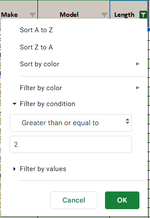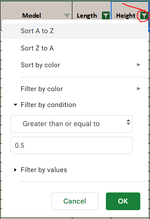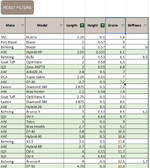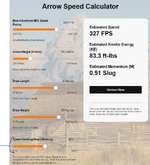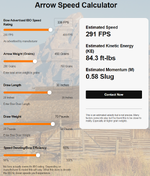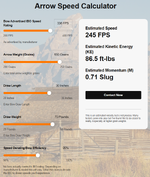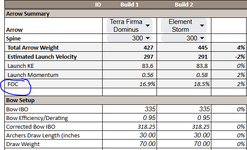Over the years I’ve developed a fairly comprehensive database/arrow builder and figured I'd polish it up for people to utilize and noodle what you’d like for your build. The database has as many vanes, nocks and arrow shafts as I could find. It's not complete of course but will be updated live. It's fairly straightforward but feel free to ask if you have questions.

 www.thearrowbuilder.com
www.thearrowbuilder.com
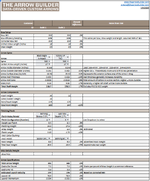
How to use:
1) The sheet shown below is a live document on Google Sheets. It works best on desktop. Being a live google sheet multiple people can be in it at any time, which would be frustrating to use if someone else is in it. So what I recommend is doing a File->Download as XLXS for Microsoft Excel. If you don’t have Excel, then click File->Make a Copy.
2) Starting from Cell C9 work your way down the sheet, completing information as needed. Lookup functions will populate based on your inputs. For example, when you select your arrow shaft and spine, the GPI populates. Same for vanes, nocks, etc.
3) This sheet allows you to compare 2 arrows and shows the % difference between them for reference.

Arrow Builder | Build Your Perfect Arrow Today — The Arrow Builder
This tool is designed to allow archers to play around with different builds and see what the difference might be. This will help create high-performance arrows tailored to your needs. Explore our tools and get a personalized quote now.

How to use:
1) The sheet shown below is a live document on Google Sheets. It works best on desktop. Being a live google sheet multiple people can be in it at any time, which would be frustrating to use if someone else is in it. So what I recommend is doing a File->Download as XLXS for Microsoft Excel. If you don’t have Excel, then click File->Make a Copy.
2) Starting from Cell C9 work your way down the sheet, completing information as needed. Lookup functions will populate based on your inputs. For example, when you select your arrow shaft and spine, the GPI populates. Same for vanes, nocks, etc.
3) This sheet allows you to compare 2 arrows and shows the % difference between them for reference.


